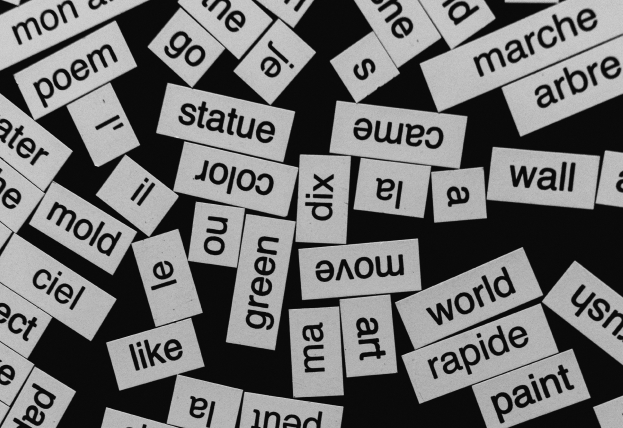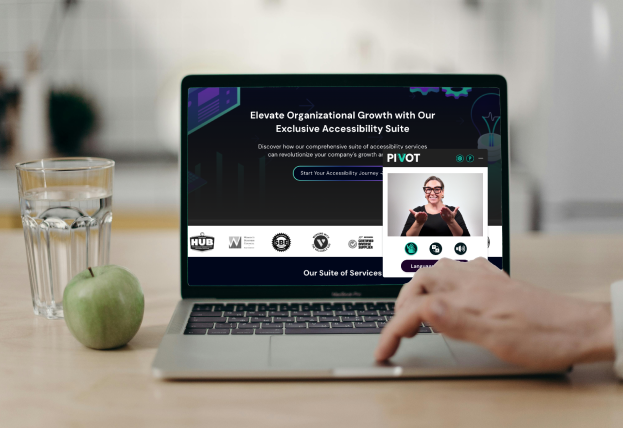There’s a myth in the digital world that accessibility and beautiful design are somehow at odds with each other. That implementing accessibility means sacrificing aesthetics for functionality, resulting in bland, uninspired interfaces.
At accesszanü, we’re here to shatter that misconception. Not only can accessible design be beautiful—it should be. When done right, accessibility enhances the user experience for everyone, creating interfaces that are both inclusive and visually stunning.
The False Dichotomy of Form vs. Function
Let’s address the elephant in the room—accessibility has an image problem. Too often, people imagine that making a website accessible means stripping away all creativity in favor of bare-bones functionality. This couldn’t be further from the truth.
The core principles of accessible design such as clear hierarchy, intuitive navigation, thoughtful color usage, and consistent patterns are also the foundations of good design. These elements don’t restrict creativity; they provide a framework that allows creativity to flourish in ways that reach more people.
Accessibility as a Design Catalyst
When designers embrace accessibility from the start, something remarkable happens—they begin to think more deeply about every design decision. This mindfulness leads to more innovative, elegant solutions that work better for everyone. Let’s dive into some examples:
Color and Contrast
A high-contrast color palette isn’t just essential for users with visual impairments, it creates visual impact and improves readability for everyone, especially in challenging lighting conditions like bright sunlight on a mobile screen.
The misconception: “High contrast means I can only use black and white.”
The reality: Sophisticated color palettes with proper contrast ratios can be created using rich, vibrant colors. Tools like contrast checkers allow designers to verify their choices meet accessibility standards while maintaining brand identity.
Typography
Accessible typography doesn’t mean boring typography. It means selecting fonts that are legible at different sizes and work well across devices.
The misconception: “Accessible fonts are limited to a few basic options.”
The reality: Many beautifully designed typefaces are highly readable. The key is choosing fonts with clear letterforms, appropriate line spacing, and suitable contrast. When combined with proper hierarchy, these choices create both visual interest and accessibility.
Layout and Spacing
Clean, organized layouts with adequate white space aren’t just accessible—they’re the cornerstone of modern, sophisticated design.
The misconception: “Accessible layouts must be simple and boxy.”
The reality: Thoughtful grid systems, consistent spacing, and clear visual hierarchies create designs that feel harmonious and intuitive while being fully navigable by all users, including those using screen readers or keyboard navigation.
Industry Leaders Setting Standards
Many leading brands have also embraced accessibility without compromising their visual identity:
- Apple combines minimalist aesthetics with robust accessibility features, using subtle animations that provide feedback without distracting
- Microsoft’s Inclusive Design Toolkit demonstrates how designing for permanent, temporary, and situational disabilities drives innovation for all users
- Slack’s thoughtful implementation of themes and keyboard shortcuts creates both visual customization and functional accessibility
Technical Implementation—Making Accessibility Beautiful
Let’s explore some technical approaches to creating accessible designs that enhance rather than detract from aesthetics:
CSS Techniques for Accessible Beauty
Default browser focus indicators:
Most browsers apply a simple blue outline to focused elements by default. While functional, these indicators often clash with brand aesthetics, leading some designers to remove them entirely—a major accessibility problem.
Elegant focus state alternative:
Instead of removing focus indicators, create custom ones that complement your brand. Using subtle animations, layered shadows in brand colors, and transitions creates a more polished look while maintaining clear visual feedback for keyboard users.
Enhanced hover states:
Rather than relying solely on color changes (which can be difficult for color-blind users to perceive), combine multiple visual cues like subtle movement, shadow changes, and background shifts to create hover states that are both beautiful and perceivable by all users.
Semantic HTML That’s Both Accessible and Flexible
Instead of using generic divs for everything:
Many developers use div elements for all components, creating what’s often called “div soup.” This approach lacks semantic meaning and makes it harder for assistive technologies to understand the content’s purpose.
Better approach: Use semantic HTML elements:
Using proper semantic elements like article, h3, p, and button gives assistive technologies important context about the content. This not only improves accessibility but also creates cleaner, more maintainable code.
Making Icons Accessible
Common accessibility problem with icons:
Icons often lack text alternatives, making their purpose unclear to screen reader users. Sometimes developers add ARIA labels to every icon, even decorative ones, which creates verbosity.
Better approach: Strategic use of aria-hidden and text alternatives:
For functional icons, include visually hidden text that screen readers can access. For decorative icons that don’t convey meaning, use aria-hidden=”true” to prevent screen readers from announcing them unnecessarily.
Visually hidden text technique:
A key technique in accessible design is providing text for screen readers while keeping it visually hidden. This allows us to maintain clean visual designs while ensuring all users have access to the same information. This approach is commonly used for icon buttons, form labels that need to be compact, and other UI elements where visual space is limited but context is essential.
The Business Case for Beautiful, Accessible Design
Beyond the ethical imperative, beautiful accessible design delivers tangible business benefits:
- Expanded market reach: Designs that work for people with disabilities work better for everyone, including aging populations and people using devices in challenging environments.
- Brand perception: Companies known for accessible, well-designed experiences build reputations for thoughtfulness and attention to detail.
- Innovation driver: Solving for accessibility challenges often leads to creative solutions that benefit all users.
- Legal compliance: Meeting accessibility standards helps avoid potential legal issues while creating better experiences.
- Reduced maintenance costs: Well-structured, accessible code is typically cleaner and easier to maintain, leading to lower development costs over time.
Focusing on Key Design Elements: Color as an Accessibility Superpower
Color deserves special attention in accessible design because it’s both a common accessibility challenge and a powerful design tool when used correctly.
Beyond Basic Contrast Ratios
While meeting the WCAG 2.1 contrast requirements (4.5:1 for normal text, 3:1 for large text) is essential, truly excellent design goes further:
- Color systems with built-in accessibility: Creating a color system where any text color paired with any background color in the same palette automatically meets contrast requirements
- Contextual adaptation: Designing interfaces that respond to high-contrast mode or user preference settings without breaking visual harmony
- Multiple visual cues: Using combinations of color, shape, and text to convey information rather than relying on color alone
Strategic Use of Color Psychology
Accessible color design can leverage color psychology while maintaining accessibility:
- Using blue tones (like accesszanü’s brand teal) to convey trustworthiness and professionalism
- Creating emotional impact through strategic color placement rather than low-contrast implementations
- Using color to guide attention and create visual hierarchy while ensuring information is never conveyed by color alone
Color in Motion and Interaction
Color can enhance interaction design when used thoughtfully:
- Subtle color shifts for hover and focus states that maintain contrast requirements
- Color animations that support rather than replace other interactive feedback
- Thoughtful color application in videos and motion graphics with consideration for photosensitive users
It Just Feels Right
Great design should feel effortless and welcoming to everyone who experiences it. When accessibility is woven into the fabric of design thinking, the result isn’t just compliant—it’s compelling.
Beautiful, accessible design isn’t about compromise. It’s about creating digital spaces where everyone feels valued, included, and delighted. Because when design works for everyone, it just feels right.
Experience the accesszanü Difference
Ready to create digital experiences that are both stunning and accessible? Let’s explore how accesszanü can transform your approach to design:
- Book a Design Accessibility Audit: Get a comprehensive review of your current digital presence with actionable recommendations.
- Schedule a Consultation: Discuss your specific accessibility challenges with our experts.
- Partner with Us: Work with our team to create beautiful, accessible digital marketing experiences from the ground up.
Contact us today at hello@accesszanu.com or call 323.287.5685 to start your accessibility journey.
References
Web Content Accessibility Guidelines (WCAG) 2.1. (2018). W3C. https://www.w3.org/TR/WCAG21/
Nielsen, J. (2018). Accessibility is not enough. Nielsen Norman Group. https://www.nngroup.com/articles/accessibility-is-not-enough/
Microsoft. (2016). Inclusive design toolkit. Microsoft Design. https://www.microsoft.com/design/inclusive/
WebAIM. (2021). WebAIM million: An annual accessibility analysis of the top 1,000,000 home pages. https://webaim.org/projects/million/
Groves, K. (2019). Accessible design is good design. Dribbble. https://dribbble.com/stories/2019/08/12/accessibility-is-good-design
Apple. (2022). Human interface guidelines: Accessibility. https://developer.apple.com/design/human-interface-guidelines/accessibility
The A11Y Project. (2023). Accessible color systems. https://www.a11yproject.com/
Click-Away Pound Survey. (2019). The business case for inclusive design. https://clickawaypound.com/
W3C. (2021). ARIA authoring practices guide. https://www.w3.org/WAI/ARIA/apg/
Paciello Group. (2022). Color contrast analyzer. https://www.tpgi.com/color-contrast-checker/
Interaction Design Foundation. (2022). Accessibility: How to design for all. https://www.interaction-design.org/literature/topics/accessibility
Design for Accessibility Without Sacrificing Aesthetics
Are you ready to take your accessible design to the next level? Download our guide “Design for Accessibility Without Sacrificing Aesthetics” now!
By providing your email address and clicking 'Download Now,' you consent to receive our marketing and exclusive content from dozanü and its divisions. You can unsubscribe at any time by clicking the 'Unsubscribe' link in the newsletter.




